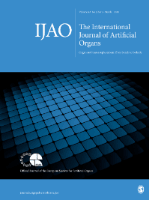
INTERNATIONAL JOURNAL OF ARTIFICIAL ORGANS
Scope & Guideline
Transforming Lives Through Cutting-Edge Research.
Introduction
Aims and Scopes
- Artificial Organ Development:
Research focusing on the design, engineering, and optimization of artificial organs such as ventricular assist devices, artificial lungs, and bioartificial organs. - Clinical Applications and Outcomes:
Studies evaluating the clinical effectiveness, safety, and long-term outcomes of artificial organ implementation in various patient populations, including those with heart failure, kidney disease, and respiratory failure. - Biomaterials and Hemocompatibility:
Investigation of new biomaterials and their interactions with blood components to enhance biocompatibility and reduce complications such as thrombosis and hemolysis. - Extracorporeal Therapies:
Research on extracorporeal treatments, including dialysis and hemoadsorption, aimed at improving the management of critical conditions like sepsis and acute kidney injury. - Innovative Technologies and Techniques:
Exploration of novel techniques, such as 3D printing and computational modeling, to advance the design and functionality of artificial organs and devices.
Trending and Emerging
- Artificial Intelligence and Machine Learning in Device Optimization:
An increasing number of studies are exploring the integration of AI and machine learning for optimizing device performance and personalizing patient treatment plans. - COVID-19 Related Research:
There is a marked rise in research focused on the implications of COVID-19 on organ support therapies, particularly regarding extracorporeal membrane oxygenation (ECMO) and hemoadsorption treatments. - Tissue Engineering and Regenerative Medicine:
Emerging interest in tissue engineering approaches for organ repair and replacement, including the use of stem cells and bioengineered scaffolds, is becoming more prevalent. - Long-Term Outcomes and Quality of Life Assessments:
A growing trend towards assessing the long-term quality of life and psychological impacts on patients receiving artificial organ therapies, emphasizing holistic approaches to patient care. - Sustainable Practices in Medical Device Design:
An emerging focus on sustainability and the environmental impact of medical devices, reflecting a broader awareness of ecological responsibilities within the medical field.
Declining or Waning
- Conventional Dialysis Techniques:
Research on traditional dialysis methods seems to be declining, as the focus shifts towards more innovative and efficient dialysis solutions and technologies. - Basic Mechanical Engineering Studies:
Papers that primarily discuss basic mechanical engineering principles without direct clinical relevance are becoming less common, indicating a move towards more applied research that directly impacts patient care. - Single-Center Studies:
There is a noticeable reduction in single-center studies, as the field increasingly emphasizes multi-center collaborations and larger cohort studies to enhance the generalizability of findings.
Similar Journals
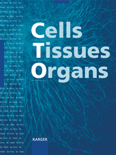
CELLS TISSUES ORGANS
Empowering Scholars with Open Access to Vital Discoveries.CELLS TISSUES ORGANS is a renowned academic journal published by KARGER, focusing on pivotal research within the fields of Anatomy and Histology. Based in Switzerland, this journal has been disseminating influential scientific findings since 1889, contributing to our understanding of cellular structures and tissue functionality. With a current impact factor that places it in the Q2 quartile for both disciplines, it serves as a vital resource for researchers, professionals, and students seeking to stay abreast of significant advancements and discussions in these areas. The journal embraces an Open Access model, ensuring that high-quality, peer-reviewed articles are freely available, thus enhancing visibility and accessibility of critical research. As it continues to foster scholarly communication and innovation up to 2024, CELLS TISSUES ORGANS plays a crucial role in shaping the future of biological sciences and medical research.
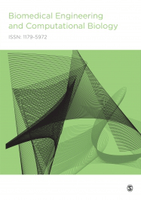
Biomedical Engineering and Computational Biology
Exploring the Intersection of Engineering and Life SciencesBiomedical Engineering and Computational Biology is a premier journal dedicated to advancing the fields of biomedical engineering and computational biology through rigorous research and innovation. Published by SAGE Publications Ltd, this Open Access journal has been providing a platform for the dissemination of high-quality research since 2009, enabling wider accessibility and collaboration among scientists and practitioners around the globe. With its comprehensive scope that encompasses the intersection of engineering principles and biological systems, the journal plays a critical role in fostering advancements in healthcare technologies and computational methods. Researchers, professionals, and students alike can take advantage of its rich repository of articles that contribute significantly to the understanding and application of complex biological data through computational techniques. The journal’s commitment to excellence is reflected in its high visibility within the scientific community, making it an essential resource for those looking to stay at the forefront of this dynamic field.
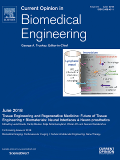
Current Opinion in Biomedical Engineering
Stimulating discussions in life sciences and engineering.Current Opinion in Biomedical Engineering is a renowned journal published by Elsevier, focusing on the cutting-edge developments and critical assessments in the fields of biomedical engineering and related disciplines. With an ISSN of 2468-4511, it provides a valuable platform for researchers and professionals to disseminate their insights and discoveries in areas such as bioengineering, biomaterials, and medicine. Its impressive impact factor positions it in the Q2 category for several fields, including Bioengineering and Biomedical Engineering, highlighting its influence and relevance in ongoing scientific dialogues. The journal’s unique format of opinion pieces and reviews encourages innovative thinking and fosters collaboration among experts. As an essential resource for those engaged in the life sciences and engineering, Current Opinion in Biomedical Engineering serves to stimulate discussion, promote knowledge exchange, and drive advancements in biomedical applications. Set in the Netherlands at Radarweg 29, 1043 NX Amsterdam, the journal is accessible through various academic platforms, enabling a global readership to engage with the latest scholarly work in this dynamic field.

Acta of Bioengineering and Biomechanics
Fostering collaboration in the dynamic fields of bioengineering and biomechanics.Acta of Bioengineering and Biomechanics is a distinguished academic journal published by Wroclaw University of Technology, Faculty of Computer Science & Management, focusing on the interdisciplinary fields of bioengineering and biomechanics. Since its inception in 2005, the journal has provided a platform for innovative research and critical reviews that contribute to the advancement of knowledge in areas such as biomaterials, biomedical engineering, and biophysics. Despite its current Q4 ranking in several categories, including Bioengineering and Biomaterials, it serves as a valuable resource for emerging scholars and seasoned professionals alike, highlighting the evolving landscape of research in these dynamic fields. The journal brings together a diverse range of studies, fostering collaboration and creativity among its readership. With its commitment to disseminating high-quality research, Acta of Bioengineering and Biomechanics plays an essential role in nurturing academic inquiry and professional growth within the scientific community in Poland and beyond.

JOURNAL OF BIOMEDICAL MATERIALS RESEARCH PART B-APPLIED BIOMATERIALS
Transforming Healthcare with Cutting-edge Biomaterials ResearchJOURNAL OF BIOMEDICAL MATERIALS RESEARCH PART B-APPLIED BIOMATERIALS, published by Wiley, is a leading journal in the field of biomaterials and biomedical engineering, with an impact factor reflected in its relevant Scopus rankings—including a Q2 position in Biomedical Engineering and Q3 in Biomaterials for 2023. This journal, with ISSN 1552-4973 and E-ISSN 1552-4981, serves as a vital platform for disseminating pioneering research and innovative applications of biomaterials. Positioned in the United States, it aims to bridge the gap between material science and biological applications, fostering collaboration among researchers, professionals, and students dedicated to advancing technology in healthcare. With a convergence of studies from 2003 to 2024 and a growing focus on open access, the journal ensures greater visibility and accessibility for groundbreaking research. Join us in exploring the dynamic field of biomaterials, as we push the boundaries of science and engineering for improved patient outcomes.

Bioengineering & Translational Medicine
Catalyzing Change in Biomedical EngineeringBioengineering & Translational Medicine, published by WILEY, positions itself at the forefront of innovation in the fields of biomedical engineering, biotechnology, and pharmaceutical science. With an impressive impact factor reflected through its top-tier Q1 rankings in multiple categories, the journal serves as a critical platform for disseminating cutting-edge research and stimulating discourse among professionals and scholars since its establishment as an open-access journal in 2016. Key to its mission is facilitating the translation of bioengineering research into tangible medical applications, thereby enhancing healthcare outcomes. With its comprehensive scope, it attracts a diverse readership, including researchers, industry leaders, and students eager to engage with the latest developments in translational medicine. The journal operates under robust access options, ensuring that research is freely available for maximum reach and impact, fostering collaboration and innovation across disciplines worldwide.

Frontiers in Medical Technology
Bridging Disciplines for a Healthier TomorrowFrontiers in Medical Technology is a prominent open-access journal published by FRONTIERS MEDIA SA, based in Switzerland. Since its inception in 2019, this journal has established a significant foothold in interdisciplinary research, seamlessly integrating advancements in biomedical engineering, medical laboratory technology, and health professions. With impressive rankings, including Q2 in Biomedical Engineering and Q1 in multiple medical categories, it consistently ranks among the top journals in its field, boasting a commendable impact in the health professions domain (ranked #9 out of 78). The journal aims to disseminate innovative breakthroughs and facilitate collaboration across various specialties, making it essential reading for researchers, practitioners, and students keen on the latest developments in medical technology. Being an open-access publication since 2021, it ensures that cutting-edge research is readily available to a global audience, thus enhancing accessibility and fostering a knowledge-driven approach in medical sciences.

PERFUSION-UK
Transforming Patient Care Through Cutting-Edge ResearchPERFUSION-UK is a distinguished academic journal published by SAGE Publications Ltd, focusing on advanced topics in the fields of nursing, cardiology, and radiology, among others. With an ISSN of 0267-6591 and an E-ISSN of 1477-111X, this journal serves as a crucial platform for disseminating vital research and innovative practices in both theoretical and applied aspects of perfusion science. Operating from the United Kingdom, it has an impressive history, converging years from 1986 to 2024. In the 2023 category quartiles, it has secured a Q2 ranking in Advanced and Specialized Nursing, revealing its strong reputation in the nursing community, while also ranking Q3 in cardiology and other medical specialties, which highlights its multidisciplinary significance. With a commendable Scopus ranking positioning it favorably among its peers, PERFUSION-UK is committed to providing researchers, professionals, and students access to cutting-edge studies and practices, ultimately aiming to enhance patient care and safety in clinical settings.

ASAIO JOURNAL
Advancing Biomedical Innovation for a Healthier TomorrowThe ASAIO Journal, published by Lippincott Williams & Wilkins, stands as a premier platform in the realm of bioengineering and biomedical innovation, with a rich history spanning from 1978 to present. Renowned for its rigorous peer-reviewed content, the journal holds an impressive impact factor categorized as Q1 in Biomedical Engineering and Q1 in Biophysics for 2023, signaling its critical role in advancing knowledge and research in these pivotal fields. The journal's domain extends into diverse topics within biophysics, biomaterials, and miscellaneous areas of medicine, making it a vital resource for researchers, professionals, and students alike. Through its commitment to showcasing pioneering research and fostering scientific dialogue, the ASAIO Journal reinforces its position as a key contributor to the ongoing development of innovative medical solutions. Researchers and practitioners can access a wealth of knowledge that is essential for staying at the forefront of technology and methodologies that shape the future of healthcare.
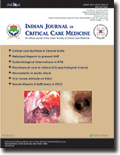
Indian Journal of Critical Care Medicine
Advancing Critical Care Knowledge for Better Patient OutcomesIndian Journal of Critical Care Medicine is a premier platform dedicated to advancing knowledge in the vital fields of Critical Care and Intensive Care Medicine. Published by JAYPEE BROTHERS MEDICAL PUBLISHERS PVT LTD, this journal has been a crucial resource since its inception in 2004, and it continues to play a significant role in disseminating groundbreaking research and clinical practices. With an impressive Scopus rank of #42 out of 110 and a 62nd percentile in its category, the journal is recognized for its quality and relevance within the medical community, achieving a Q2 category ranking in Critical Care and Intensive Care Medicine for the year 2023. Although not open-access, it provides essential insights tailored for researchers, healthcare professionals, and students alike, focusing on emerging trends, innovative techniques, and comprehensive reviews that enrich the discourse in critical care. By bridging gaps in knowledge and practice, the Indian Journal of Critical Care Medicine serves as an indispensable resource for those committed to improving patient outcomes in the ever-evolving landscape of critical care.